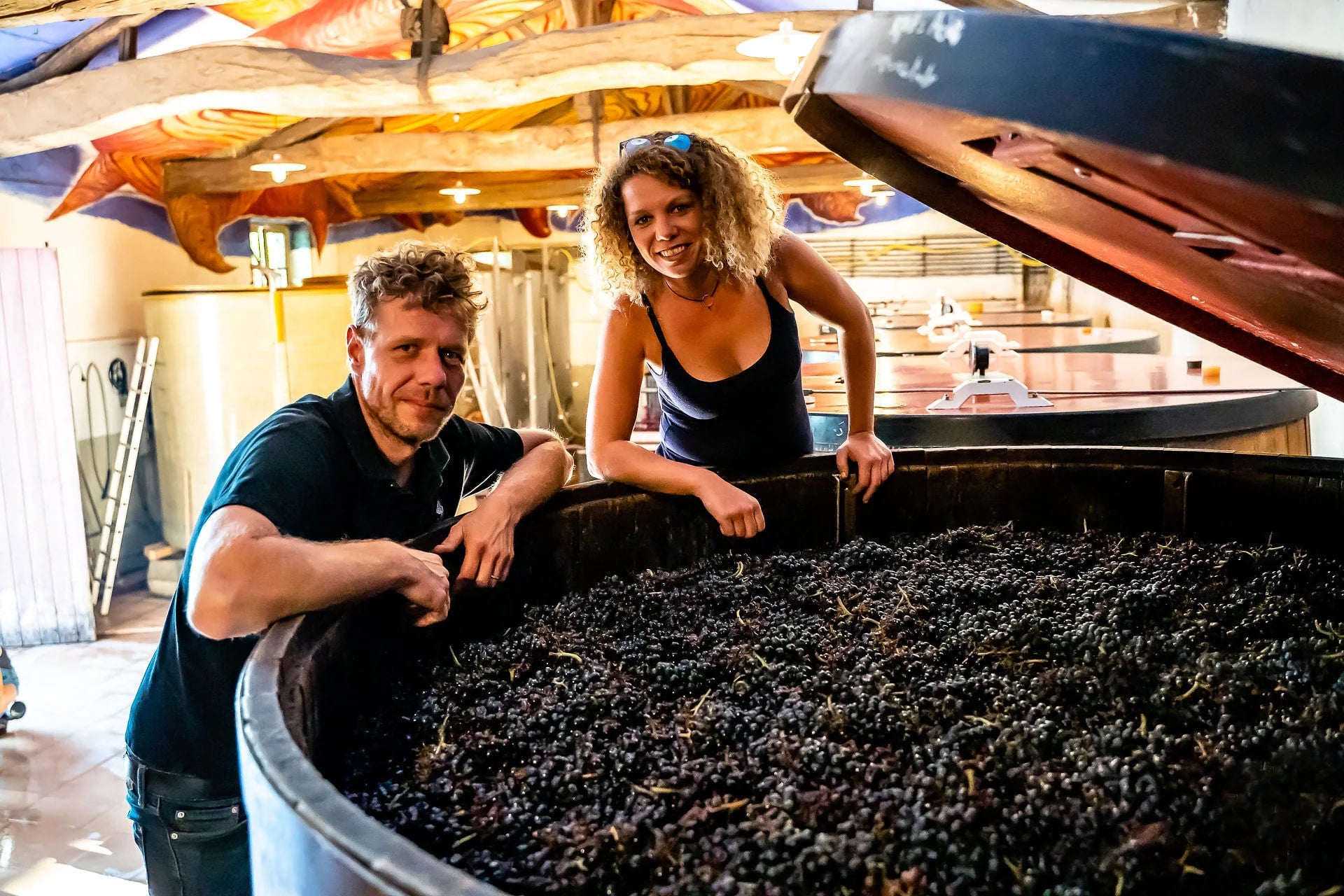MARCEL LAPIERRE
There are few wines that both excite us and bring us closer like those of Marcel Lapierre.
Beaujolais—pronounced “bow-zuh-lay”—is one of our favorite styles of wine to drink. And to be frank, many of us in the wine world find ourselves grabbing a bottle of this to open again and again… and again. The conversation goes beyond the story of the region and the style of the wine though; the work contributed by Marcel Lapierre goes much deeper. He is one of the most celebrated producers in multiple realms of the winemaking world, whether it be Beaujolais, French wine as a whole, and even the broader category of natural wine. His work has had a domino effect on numerous aspects of the wine world today.
With the normalization of insecticides in vineyards after WWII, farmers were seeing higher yields in crops while weeds, insects, and mildew could be controlled. It was a dream for winemakers as they could finally profit. As profitable as the short-term effects were for income, the long-term effects were detrimental to the health of the vineyards.
Let’s talk about the “Gang of Four.”
The forerunner to the Gang of Four was Jules Chavet, a negociant farmer, who brought the concept of quality farming back to the region of Beaujolais. The leader of the Gang of Four was none other than Marcel Lapierre. As part of this winemaking movement during the 1980s, it was considered rebellious. Along with Guy Breton, Jean-Paul Thévenet, and Jean Foillard, the four championed a new path of winemaking, which simultaneously harkens back to the traditional methods. Organic and biodynamic farming were nothing new in this region, but the practices had fallen out of favor. Marcel, armed with his studies from Chavet, realized the need for a return to quality farming and a focus on the health of the vines, both of which implement those old traditions.
In 1981, Marcel opted to bottle his first vintage without sulfur. While seemingly an insignificant choice, using no sulfur set him apart from other winemakers as a whole. Conventional farming and winemaking was the norm at this time, in fact, and Marcel was by no means the norm. Importer Kermit Lynch was originally a skeptic of natural wine, particularly those with no sulfur, though these wines continue to be on the same level as the world’s greatest wines. Marcel’s winemaking influenced this ideology for the better. Kermit has made it a point to say that his style is just as revolutionary as it is traditional.
Conventional winemaking hadn’t just influenced the region of Beaujolais, it had enormous effects all over Europe. The efforts and beliefs of the natural winemaking movement in this region during the 1980s has affected the winemaking world with strong results. There’s been a return to organic and biodynamic farming. There’s been a renewed emphasis on low-yielding old vines. Quality in the vineyard and minimal, yet careful intervention in the cellar are practiced more than ever. Despite the bad reputation that Beaujolais has experienced in its past (think bubble-gummy Beaujolais Nouveau), the quality here is better than ever. While Marcel sadly passed in 2010, his two children—Camille and Mathieu—carry on the pioneering spirit of their father.
Coming from us as avid drinkers, Beaujolais is one of the most versatile wine pairings. Period. We love this wine as a beverage that gets on well with more foods than it doesn't. It’s the ultimate crowd pleaser. And frankly, when we don’t feel the need to shell out dollars on Burgundy Pinot Noir, Beaujolais from Marcel Lapierre is the most obvious choice. We love to drink this wine. We love to celebrate the name of Lapierre and what this family has done for the wine world. We suggest snatching them up when you have that opportunity—that’s right now. The world has caught on, and the wines are now more difficult than ever to locate.








